Actinologia Britannica
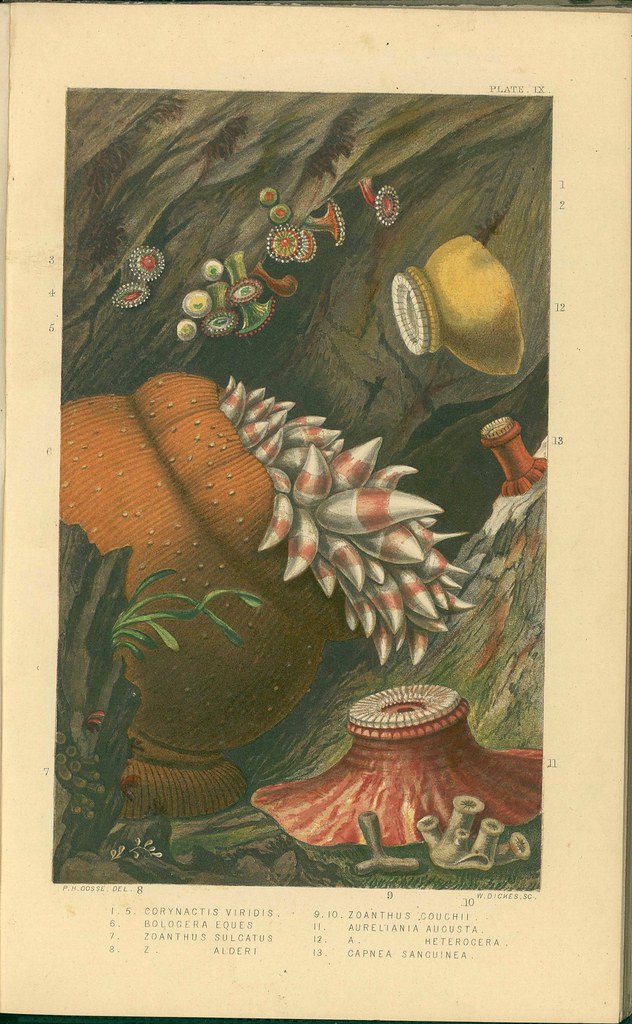



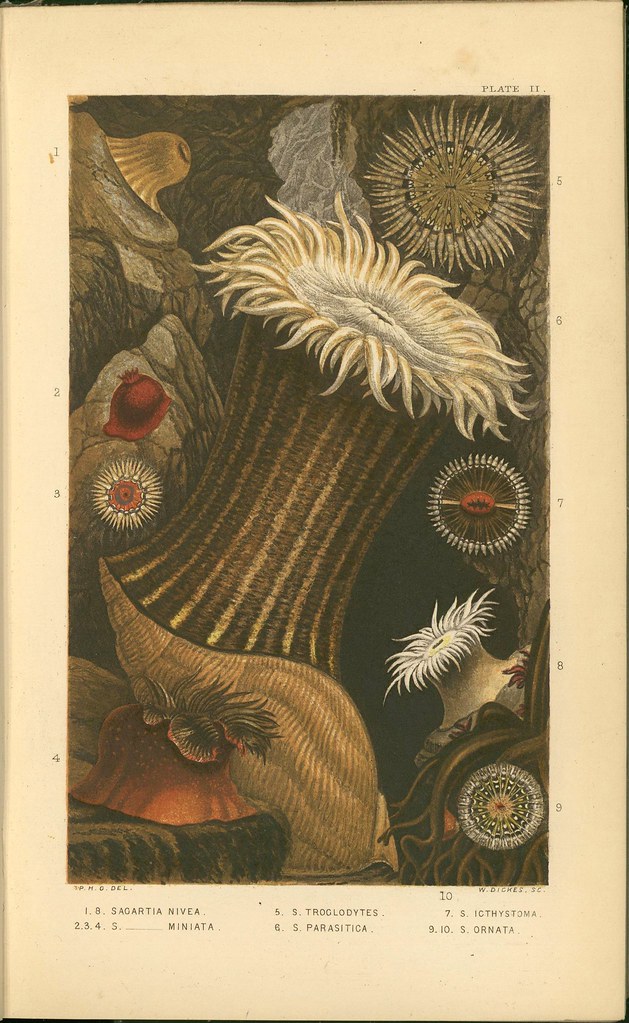
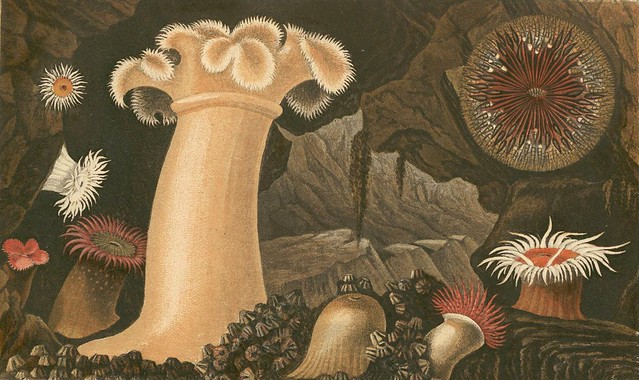
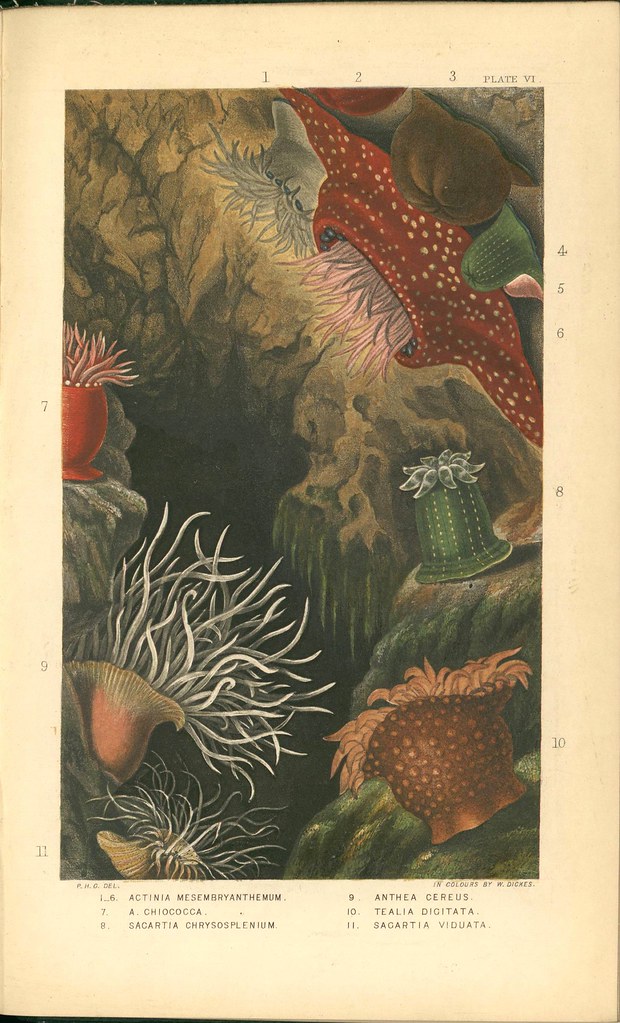
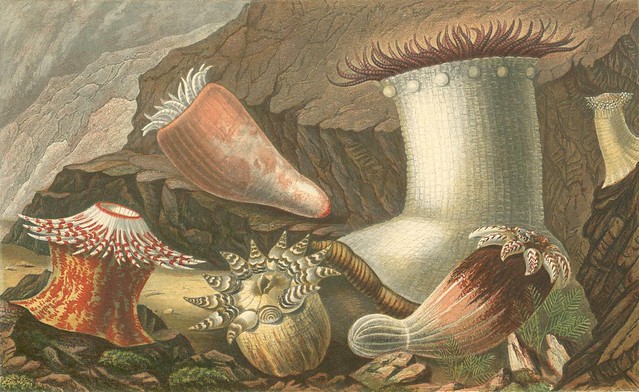
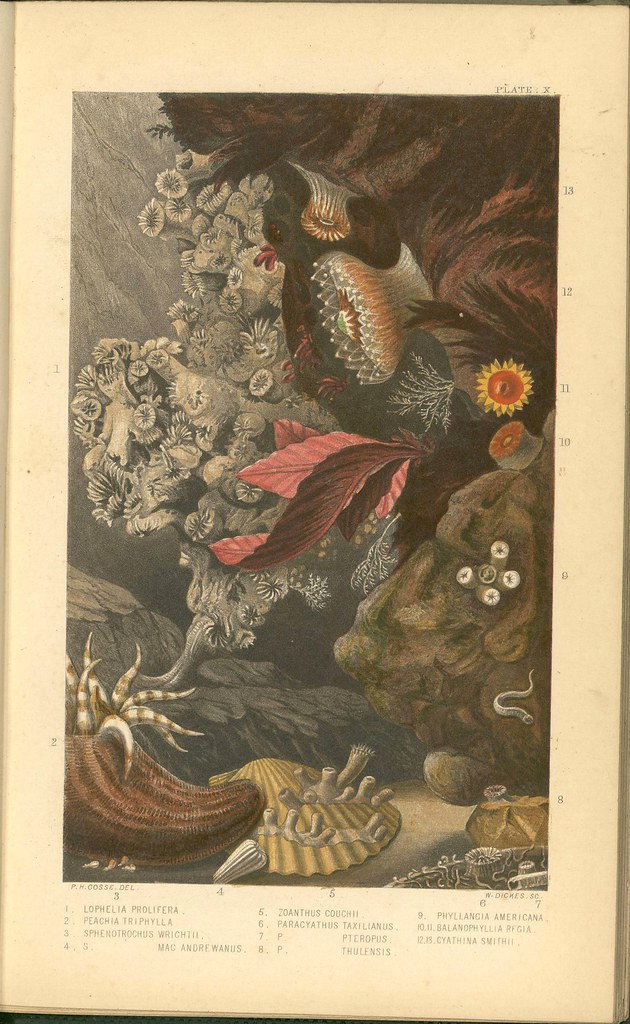
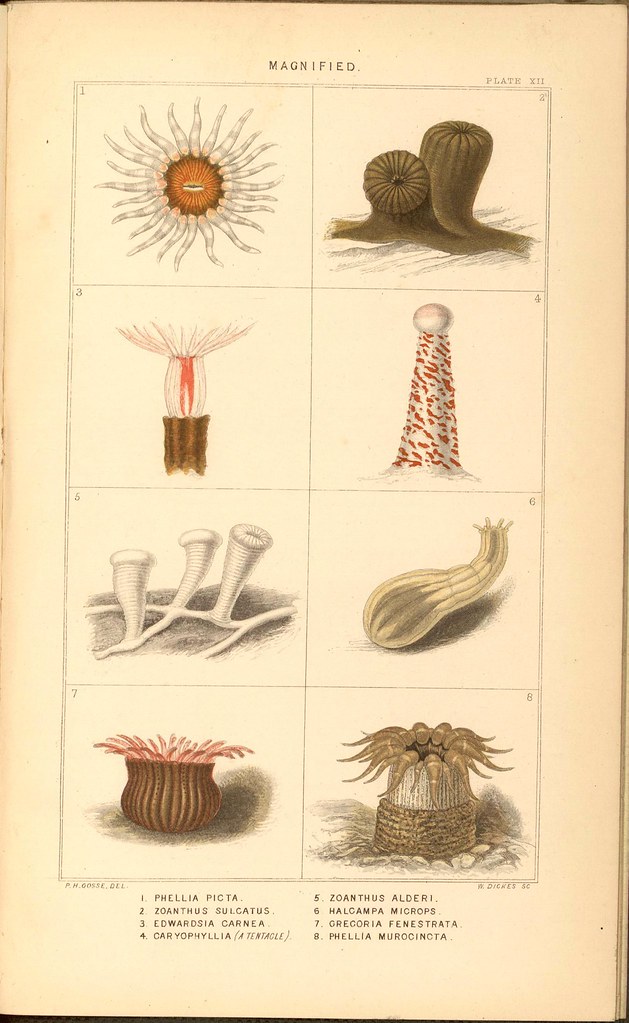
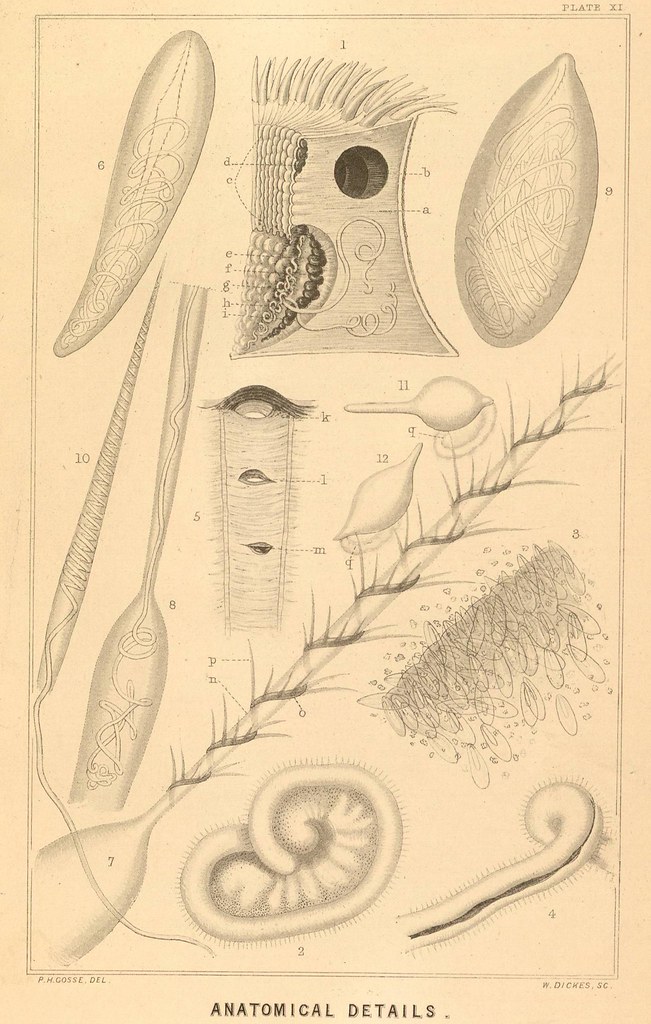
This enigmatic fellow would definitely make my short-list for dinner party guests from throughout history...
"Philip Henry Gosse (1810 – 1888) was an English naturalist and popularizer of natural science, virtually the inventor of the seawater aquarium, and a painstaking innovator in the study of marine biology. Gosse is perhaps best known today as the author of Omphalos, an attempt to reconcile the immense geological ages presupposed by Charles Lyell with the biblical account of creation.Gosse's 1860 book, 'Actinologia Britannica - a History of the British Sea-Anemones and Corals' was a very popular follow-up to a series of works he published that described how to stock and maintain a home aquarium. But as an early conservationist, Gosse was said to have been somewhat disturbed by the public's clamouring for all manner of tidal plant and animal to fill their home collections on the back of his sea anemone book.
After his death, Gosse was portrayed as a despotic and fanatically religious father in Father and Son (1907), the literary masterpiece of his son, poet and critic Edmund Gosse." [W]
The book's success was due, in no small part, to the vibrant set of a dozen chromolithographs prepared by W Dickes from Gosse's own designs and drawings.
"Among Dickes finest color plates. the softness, subtlety, and richness of the coloring far exceeds in quality the best achieved by the four-colour processes of today" [(McLean, Victorian Book Design, p.199)]
The illustrations were described as having "something of the mystery and opulence of those in 'The Temple of Flora'" (Ray, The Illustrator and the Book in England from 1790-1914, p. 106) [source]
- 'Actinologia Britannica - a History of the British Sea-Anemones and Corals' is available from the University of Strasbourg Digital Library.
- The book is also available from (at least): Internet Archive & the Biodiversity Heritage Library.
- An OCR reprint was issued last year but appears to have no illustrations, which is more than a little odd.
- Philip Henry Gosse at Strange Science. [W]
- Linda Hall Library juxtaposes Grosse's sea anemones with Thornton's amazing flower illustrations.
- 'anemone' must be close to the stupidest word ever conceived
Beautiful! Love this stuff. Like a muted Jim Woodring. Thanks so much.
ReplyDeleteInteresting and pretty!
ReplyDelete